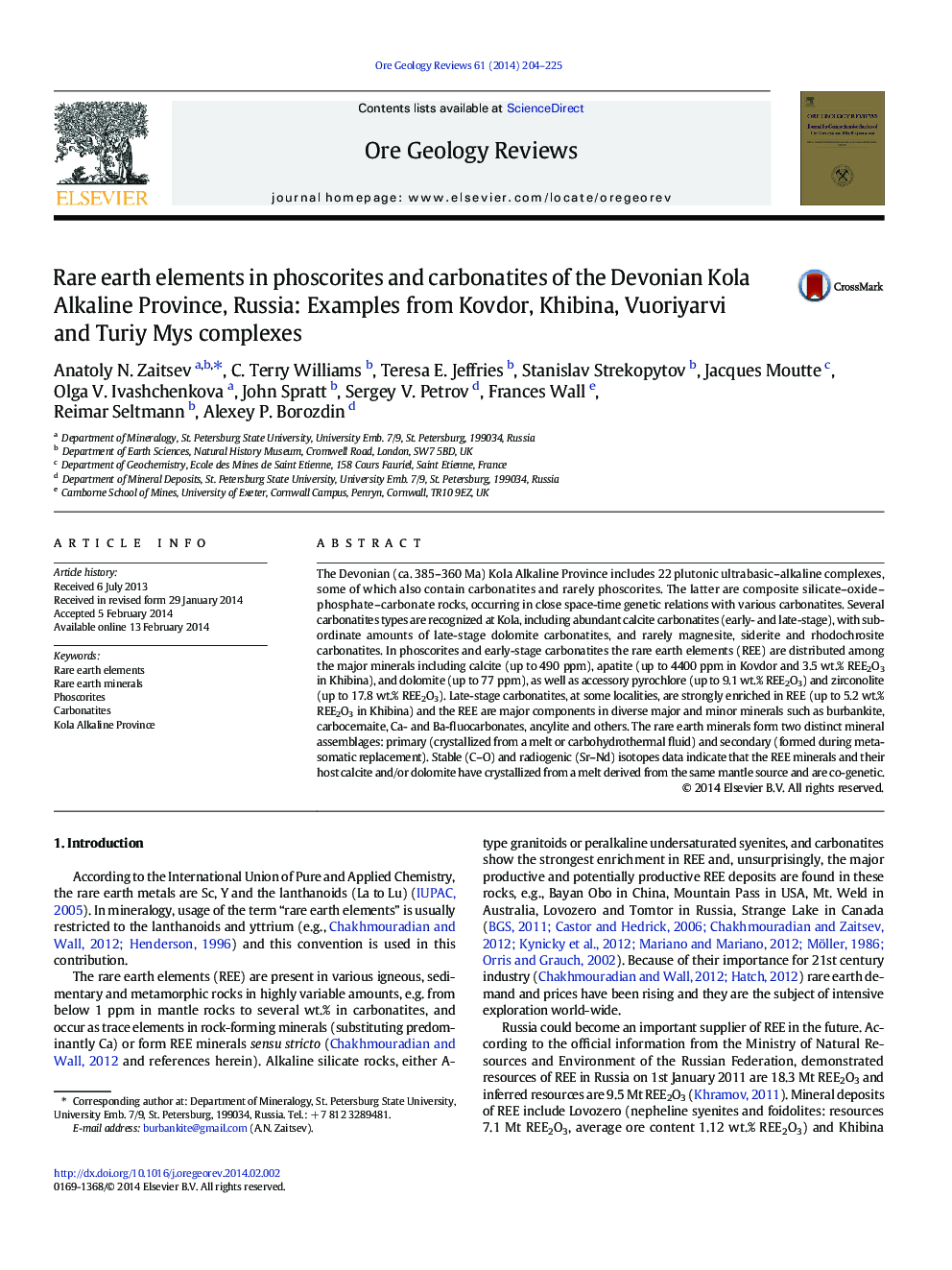| کد مقاله | کد نشریه | سال انتشار | مقاله انگلیسی | نسخه تمام متن |
|---|---|---|---|---|
| 4697367 | 1637242 | 2014 | 22 صفحه PDF | دانلود رایگان |

• Occurrence of diverse phoscorites and carbonatites in Devonian Kola alkaline complexes.
• Large variations in REE content: from tens of ppm to several wt.%.
• Calcite and apatite are major hosts for REE with subordinate REE accumulation by pyrochlore and zirconolite.
• Diverse primary and sub-solidus REE minerals in late stage carbonatites.
• Polygenetic origin (magmatic, carbohydrothermal and metasomatic) of phoscorites and carbonatites.
The Devonian (ca. 385–360 Ma) Kola Alkaline Province includes 22 plutonic ultrabasic–alkaline complexes, some of which also contain carbonatites and rarely phoscorites. The latter are composite silicate–oxide–phosphate–carbonate rocks, occurring in close space-time genetic relations with various carbonatites. Several carbonatites types are recognized at Kola, including abundant calcite carbonatites (early- and late-stage), with subordinate amounts of late-stage dolomite carbonatites, and rarely magnesite, siderite and rhodochrosite carbonatites. In phoscorites and early-stage carbonatites the rare earth elements (REE) are distributed among the major minerals including calcite (up to 490 ppm), apatite (up to 4400 ppm in Kovdor and 3.5 wt.% REE2O3 in Khibina), and dolomite (up to 77 ppm), as well as accessory pyrochlore (up to 9.1 wt.% REE2O3) and zirconolite (up to 17.8 wt.% REE2O3). Late-stage carbonatites, at some localities, are strongly enriched in REE (up to 5.2 wt.% REE2O3 in Khibina) and the REE are major components in diverse major and minor minerals such as burbankite, carbocernaite, Ca- and Ba-fluocarbonates, ancylite and others. The rare earth minerals form two distinct mineral assemblages: primary (crystallized from a melt or carbohydrothermal fluid) and secondary (formed during metasomatic replacement). Stable (C–O) and radiogenic (Sr–Nd) isotopes data indicate that the REE minerals and their host calcite and/or dolomite have crystallized from a melt derived from the same mantle source and are co-genetic.
Journal: Ore Geology Reviews - Volume 61, September 2014, Pages 204–225